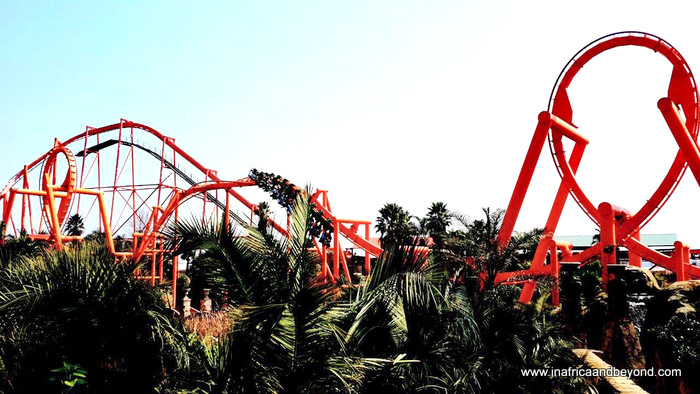The Of Johannesburg North Attractions
Table of ContentsThe Greatest Guide To Johannesburg North AttractionsThe Greatest Guide To Johannesburg North AttractionsTop Guidelines Of Johannesburg North AttractionsGetting My Johannesburg North Attractions To WorkWhat Does Johannesburg North Attractions Do?The Best Strategy To Use For Johannesburg North Attractions
The city grew on the side of the Witwatersrand Key Coral reef, a below ground stratum of gold-bearing quartz-silica empire that arcs for hundreds of miles below the Highveld - Johannesburg North attractions. Most of the gold mines in the city discontinued procedure in the 1970s, yet in its day the Witwatersrand gold industry accounted for more than 40 percent of the world's annual gold manufacturing.Johannesburg has a pleasant climate. The city appreciates about eight hours of sunshine per day in both winter and summer.
What rain the city obtains drops virtually solely in the summer season, often in spectacular late-afternoon electrical tornados. Air contamination positions a significant problem, specifically in the winter season, when thermal inversions restrain the westward circulation of air from the Indian Ocean. Pollution is most extreme in the largely worked out Black towns on the city's periphery, where several homeowners still count on coal for fuel.

The 7-Minute Rule for Johannesburg North Attractions
The balance of the city is inhabited by whites. Holiday accommodation varies in character and top quality.
Physical development, although somewhat restricted by transport, continued quickly as migration to South Africa, and Johannesburg specifically, increased considerably. This issue was solved in the 1930s when the auto was introduced in mass production to South Africa. Autos were, generally, constrained to the rich, and allowed them to transfer to the north of the city and commute into the centre.
A lot of poor suburban areas were blended, with bad blacks and whites living together, although the well-off suburbs were normally booked for whites. This changed with the election of the National Celebration in the 1948 political elections, who began to formalise the system referred to as racism. Apartheid formally designated which suburban areas each race might stay in under the Team Areas Act.
The previous system of eleven phoned number areas was reorganised in 2006. Marshalltown, as seen from the top of the Carlton Centre. The M1 and M2 run behind the structures, and the southerly suburbs prolong past the freeway border. The internal city of Johannesburg is situated within the city's Area F. The estimated populace of the area is 200,000, [] but the variety of individuals staying in the central city on a casual basis is unidentified, as lots of are illegal aliens. Most higher-income locals and white people have relocated to the north residential areas and have actually been changed by lower-income black individuals. The joblessness, education and learning, and age accounts of the area are all unknown, due to the difficulty of getting dependable information about the location.
Getting The Johannesburg North Attractions To Work
Centred on Look At This the CBD, the area includes the residential areas of Yeoville, Bellevue, Troyeville, Jeppestown, and Berea to the eastern. To the west it infects Pageview (Johannesburg North attractions) and Fordsburg. There are little enterprise zones to the south, such as City West-Denver and Benrose. Around 800,000 travelers travel through the inner city daily, and it operates as a regional purchasing node for visitors from the southern residential areas. Yeoville and Bellevue have a mix of home buildings and single property devices on small lots. The region is situated on a hilly divide that runs from east to west.

Johannesburg Arena, a training school for both the Golden Lions and Orlando Pirates, is surrounding. The eastern suburban areas of Johannesburg are located in the city's 7th [] and 9th [] areas. The area is also functionally incorporated with East Rand border towns beyond the main border of Johannesburg, such as Bedfordview and Edenvale (both component of Ekurhuleni Metropolitan Community).
Johannesburg North Attractions Can Be Fun For Everyone
R. Tambo International Airport Terminal). The eastern suburbs are a few of the earliest areas of Johannesburg, there are huge neighborhoods of Jewish and other European histories, most of the populace is English speaking. There are three fairway as well as a variety of secured ridges with viewsites. There are numerous well-developed and up-market amusement and shopping areas in the eastern such as the Eastgate Mall and the Greenstone mall.
Initially constructed to house male migrant employees, lots of have been improved as dwellings for couples and family members. The residential area was not traditionally enabled to produce employment centres within the location, so nearly all of its citizens are commuters Home Page to other parts of the city.
Not known Facts About Johannesburg North Attractions
The household areas in the north residential areas are mainly formal, with no substantial areas of informal real estate, or real estate that does not have a permanent structure. This is a well-known area, there is a pattern of land usage adjustment from residential to commercial, especially along main arterial roads and around recognized nodes.
The location is well linked to roadway networks, specifically pop over here along the north-south axis created by the M1 and N1. Roads to the east and west are less well developed, as there are no freeways travelling in that direction. Towards the north boundary of the city, the thickness of growth lowers, leaving huge locations of untaught land around Midrand.
The Only Guide to Johannesburg North Attractions
, which is situated on a hill forgeting the inner city and Hillbrow.